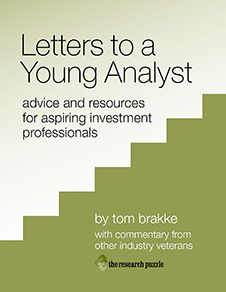
- Saturday, May 26th, 2012
- conversations
-
“A business is only as good as its conversations.”
I wish I had thought of that line, but I didn’t. Hugh MacLeod did.gapingvoid | It was the title of a blog posting last September. When I last checked with him, he hadn’t used it in a piece of art. I hope to get a copy of it when he does. He is a cartoonist with an unlikely mission, “changing business for the better.”
Ever since I saw that quote from MacLeod I have been repeating it to clients, because I think it perfectly sums up the challenges that many of them face. Investment organizations — whether they be businesses per se or other kinds of institutions that make investment decisions — need to have the right people involved in those organizational conversations, the right issues addressed, and the dialogue should meander in constructive rather than destructive ways.
Attending the CFA annual conference got me thinking more about the nature of those conversations, since there were quite a few presentations that touched on the theme in one way or another, surprisingly so for an investment conference. But such a gathering spawns a series of conversations of its own, with people you planned to meet, those that you’ve known online but not in person, and the ones you happen to sit next to on a bus or at a table. So, to borrow a phrase, a conference is only as good as its conversations, including the ones spawned by the particular topics and speakers chosen by the organizers.
One breakout session featured Kim Redding of Brookfield Investment Management and Jim Ware of Focus Consulting Group, who has helped Redding evaluate Brookfield’s culture. The topic of their discussion was the interplay of personalities at Brookfield and investment firms in general. You might think that would be uninteresting to a bunch of investment professionals, but the room was full and there were heads nodding throughout. I think all of us had seen that investment performance can be easily damaged if no one cares about how people work together and what their conversations entail.
The fear, of course, is that you get too much structure, too much process, and too much culture, since investment people are famously reticent about all of those things. For his part, Redding is an advocate of understanding the personalities at his firm and carries the Myers-Briggs profiles and other information about his team around with him — as a reminder of how each makes decisions and how best he can communicate with them.
Redding showed the audience that information. He was somewhat of an outlier from the typical investment person (I can relate), so he processes ideas much differently than many members of his team. That kind of situation can lead to key players talking past each other and getting frustrated enough that it could end up in open warfare or a cessation in the ongoing discourse that needs to occur.
As Ware’s work has shown, investment organizations tend to have extremely unbalanced distributions of personality types. I think that’s a direct result of the dominant human relations philosophy in the industry: Hire smart people (that think like we do) and let them make decisions.
But research into decision making has demonstrated the weakness of such an approach. There is strength through interaction, specifically interaction with others who don’t address problems in the same way that you do.
Just as it’s easy to hug performance benchmarks too closely, it’s easy to adopt industry norms for what an investment organization should look like. In a business where competition is fierce and alpha is precious, it might just be that having different people, structures, processes, and conversations than other organizations will be the key to success going forward. Maybe now is the time to start talking about it.
Thus begins a “mini series” within the seriesthe research puzzle | The PDF at this site is updated as new postings appear. of postings on the CFA annual conference. Stay tuned for more thoughts about conversations with prospects, clients, networked contacts, and conference attendees.
